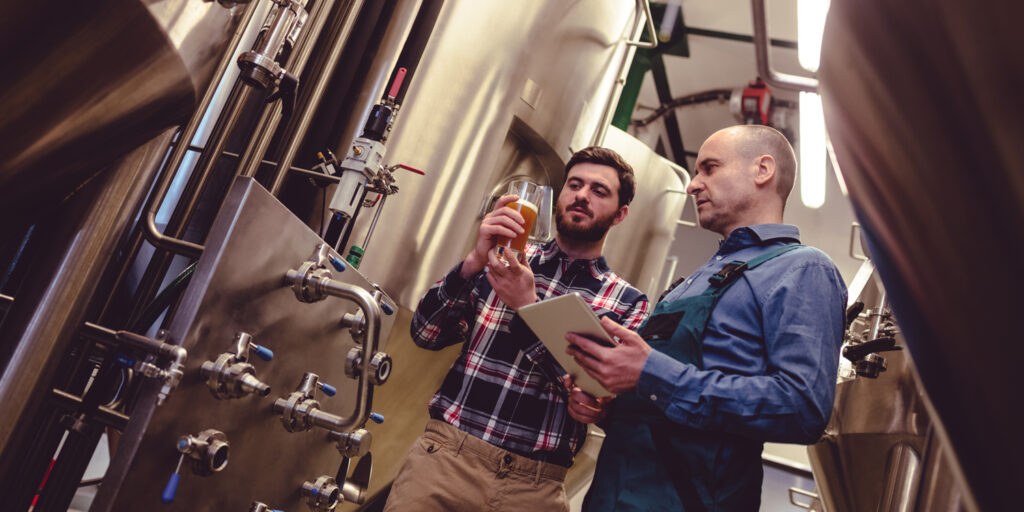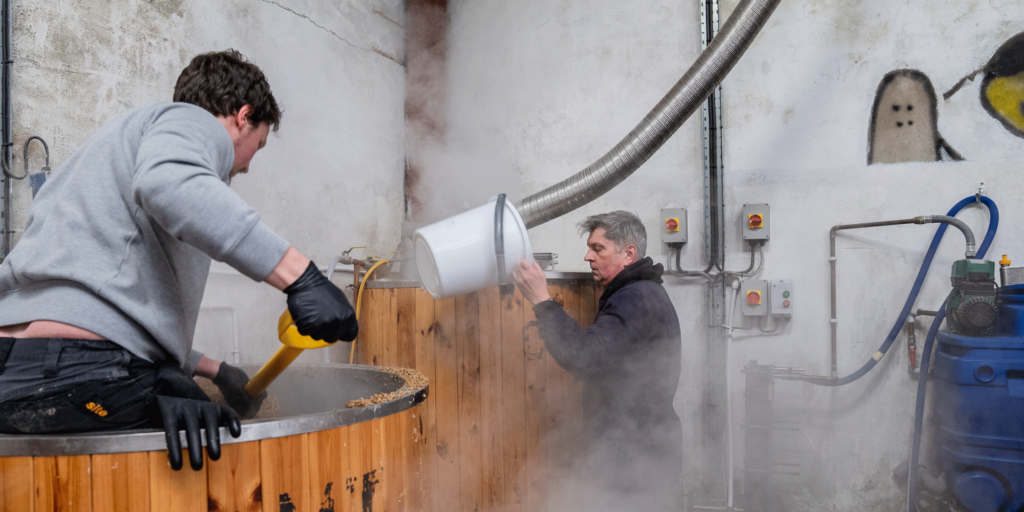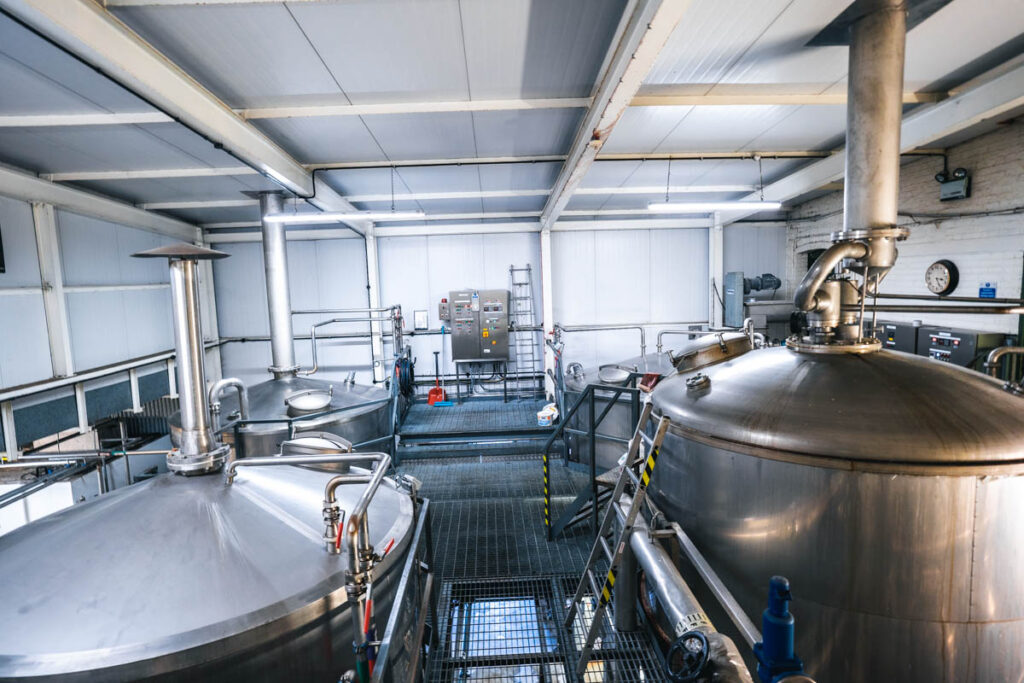How Will the New Alcohol Duty System Affect Breweries?
I’d be feeling a little bit of trepidation at the moment if I was a maltster that supplied British and Northern Irish breweries. This is because the ABV threshold at which beer producers pay a lower rate of duty is being adjusted upwards from 2.8% to 3.4% – one of several changes that will be implemented to the UK alcohol duty system when it gets completely overhauled on August 1st, 2023.

While malted barley is crucial for balance, flavour and mouthfeel, it’s also responsible for producing the extract sugars that, during fermentation, will be converted into alcohol by yeast. If a brewery decides to, say, tweak a 4% beer down to 3.4%, they’re not going to need nearly as much malt. Hence why some folks within the beer supply chain may be feeling a little unsettled at present.
It could also be argued that some beers produced at 2.8% ABV or less can taste a little on the thin side, lacking the weight that alcohol adds. This is far less noticeable at strengths closer to 3.4%, and so brewers – in particular very large, multinational producers – will see this as an opportunity to save costs on both raw materials, and on the total amount of duty paid for the same beer.
There is, thankfully, some benefit to this change, as smaller producers will likely be encouraged to take advantage of this saving by producing lower alcohol beers for themselves. There is undoubtedly a huge gap in the market for lower alcohol beers at the moment, which is an opportunity to be grasped. Although, in the grand scheme of things, these savings will likely be wiped out, as malt suppliers increase their price structures to balance out the potential shift in volumes that these changes will more than likely cause.
I should note that most of the above is very much still based on speculation. How the new system will play out when it comes into effect on August the 1st is still a mystery for breweries. HMRC did not directly address how these changes would affect producers of alcoholic beverages until they hosted a webinar on June 28th – barely a month before they come into effect. Small brewers were not pleased with this, with Andy Parker of Berkshire’s Elusive Brewing taking to Twitter to describe the new system’s implementation as “absolute top-down incompetence from the government and HMRC.”
The changes to Alcohol Duty System in the UK are significant, however. Described by Andy Slee, executive director of the Society for Independent Brewers (SIBA) as “the biggest reform of alcohol duties for more than 140 years,” they will impact producers of all alcoholic beverages, not just beer.
ABV ranges are just a small, but more tangible facet within the new rules. It’s worth noting that there’s also a higher threshold, with the increase for low alcohol beverages being met with one for higher alcohol beverages, set to be raised from 7.4% to 8.5%, respectively.

Perhaps the most significant change is that the new rules will merge separate alcohol categories so that they effectively all pay duty in the same way. Previously beer, wine, and cider each had their own systems, but from August 1st instead of paying a rate based on the specific product they’re making, they will be taxed per litre of alcohol produced. Again, there are some positives and negatives, with the English wine industry (a booming drinks category) being particularly vocal about how most winemakers will be paying more duty. Cider, meanwhile, seems relatively content by comparison, with the system updated to reflect how the industry has matured in recent years.
There’s a hidden benefit in this, in that should a winemaker want to incorporate a brewery onto their premises, or a brewer decides to make cider, or even something more left field like hard seltzer, all will effectively be taxed at the same rate, depending on the strength of what is being produced. While this remains to be seen, it’s not unfair to speculate that over the next few years we see brewers branching out into other beverage categories, as consumer tastes shift towards different drinks.
Perhaps the largest change for brewers is to what is known as Progressive Beer Duty, but is usually referred to as Small Brewers Relief (SBR). Introduced in 2002 by then chancellor Gordon Brown, SBR saw brewers producing less than 5000 hectolitres of beer annually (about 880,000 pints) get a 50% reduction on their duty. Once this threshold was crossed the amount of duty paid would increase until production size reached 60,000hL, when the full duty rate would come into effect. The idea of its introduction was to encourage more newcomers to the category, which essentially means it should be considered a success.
What was hotly debated about this rule is what some brewers called the “cliff edge” which happened when smaller breweries hit the 10,000hL mark, and the amount of duty paid rose sharply, instead of smoothly. Some argued that this stunted growth, while a handful of breweries who called themselves the Small Brewers Duty Reform Coalition (SBDRC), which was partly formed of breweries producing more than 60,000hL per year, argued that smaller breweries weren’t paying their fair share of duty.
Through SIBA, small breweries argued that it would be unfair for the UK’s smallest beer makers to face extra pressure in an industry already built on slim margins – a viewpoint I am inclined to strongly agree with.
Interestingly, the new system – now called Small Producers Relief – will also apply to winemakers and cider makers, which could see more small producers emerge in both categories. Unfortunately, the threshold at which the lowest rate of duty is paid has been lowered to 2200hL (about 387,000 pints) meaning that the hundred or so producers that exist between this threshold and the previous 5000hL one will likely pay a slightly increased rate of duty. As with most of the rulings in the new legislation, though, it’s something of a double-edged sword, as the cliff edge has been smoothed, meaning mid-sized breweries producing around 10-15,000hL per year will find themselves in a vaguely more comfortable position – at least in terms of duty.

A final, and perhaps the most interesting change to the system is the introduction of a new scheme called Draught Relief. When it was first introduced, this new legislation was going to see beer dispensed in on trade retailers via 40L or larger containers receive a 5% duty reduction. After some effective lobbying from SIBA, the container size was reduced to 20L, meaning it would also include smaller kegs, and bag in box drinks like cider. The discount was also increased to 9.6%, to match the rate of inflation that will hit the drinks industry at the same time as the new rules come into place.
The thinking behind Draught Relief is that it will help reduce the massive disparity between the on and the off trade – the fact that, for example, beer is significantly cheaper in supermarkets than it is in pubs. Since 2018, more alcohol has been consumed at home than in pubs, bars and restaurants, and it’s a figure that has continued to become more lopsided in the five years since. If Draught Relief is to be considered successful, it will help to narrow this disparity.
There are still some big question marks over the scheme, such as how kegs that will be used to dispense growler fills in bottle shops will be taxed. This is a great example of how, at least in the short term, these new rules will cause UK drinks producers more headaches than they will cure. We won’t really know what difference they will have on the drinks and hospitality industries until producers start paying duty at the new rates, and get their heads around the new system.
Another big question is how this might affect us as drinkers. It’s already a given that we’ll see a lot more lower alcohol beers become available, as well as long standing recipes being tweaked down in strength to save a few pennies. We may also see smaller breweries play around a bit more in the 7.4 – 8.4% range, with that particular duty threshold increasing.
Will beer in pubs actually become cheaper because of Draught Relief, though? As you can probably guess, this is most definitely not going to happen, with any miniscule savings likely to be absorbed by producers and retailers to help offset the spiralling cost of running their respective businesses. And this is the kicker: although duty rates are changing, the reality is that it’s just another hurdle for already wrung out drinks producers to try and find the strength to leap over. With the cost of ingredients and brewing supplies increasing, along with energy bills, and well, everything else, the price of beer will continue to creep up, until inflation is finally (and I say this hopefully) under control again.
Although, keep a close eye on those few breweries with money in the bank, who just might look to add a cider or wine-making arm to their portfolios. The age of growth has crashed to its inevitable end. The age of divestment is perhaps about to begin in earnest.
— Matthew Curtis